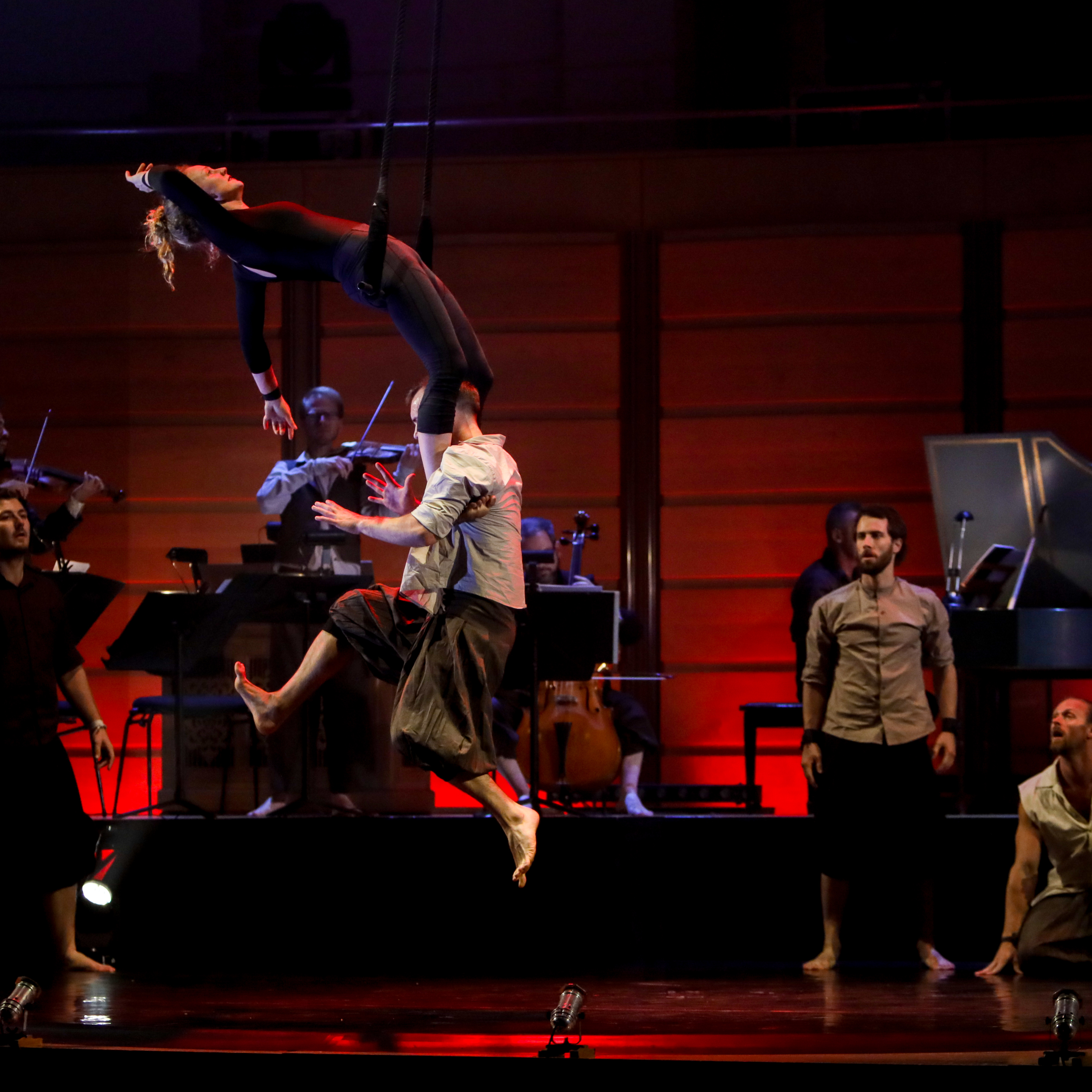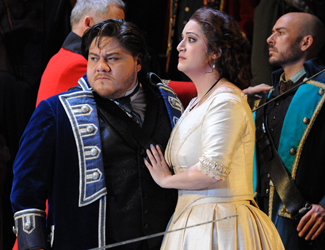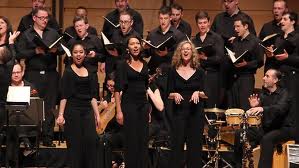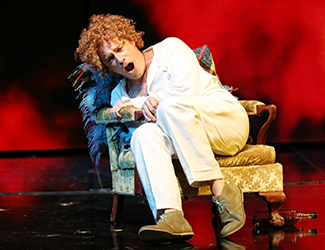Concert Review: Spanish Baroque/ Australian Brandenburg Orchestra And C!RCA
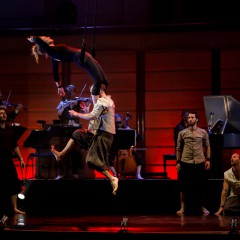
Spanish Baroque
The Australian Brandenburg Orchestra
C!RCA
City Recital Hall, Sydney
May 3, 2017
It was as though a nomadic band of acrobats complete with trobairitz and Baroque instrumentalists had somehow how transcended time and found themselves in Sydney, when the Australian Brandenburg Orchestra directed by the ever-inventive Paul Dyer AO, presented the electrifying Spanish Baroque in collaboration with the intrepid Brisbane-based acrobatic ensemble C!RCA.
Featuring New Zealand soprano Natasha Wilson as the trobairitz, making her Australian debut, and Italian classical guitarist Stefano Maiorana, the 8 artistes of C!RCA, under Artistic Director Yaron Lifschitz thumbed their noses at gravity. Along with the 9 musicians of the ABO, directed from the harpsichord and chamber organ by Dyer, they had the audience gasping with their music, movement and song.
Concertmaster Shaun Lee-Chen led the small ensemble of musicians in an inspired display of technique and lyricism, addressing the challenge of attending not only to each other but in synchronising with the split-second timing of the dare-devil acrobatic routines and with the musical needs of the trobairitz. The period instruments were played in style, radiant with the rhythms, ornaments and the patina of the Baroque, enriched with Maiorana’s exquisite plucking and a wealth of sound effects and irresistible rhythms created by percussionists Brian Nixon and Jess Ciampa.
The City Recital Hall has been many things to many ensembles. Tonight, for the first of four scenes, it was set as a circus ring with a Chinese pole centre stage and the musicians arrayed on a dais upstage. Enter the acrobats, with feline athleticism. There was not a stitch of lycra to be seen in Libby McDonnell’s costume design as the men dressed in pantaloons and shorts, and the women, in shorts and skirts which morphed into leotards, presented a colour palette of earthy neutrals with a flash of fire reflected in Peter Rubie’s lighting design. The fluid lines of the costumes enhanced the graceful movements as the acrobats sculpted the sound of the music into the air.
Performing to music by Dyer, Murcia and Merula. The acrobats scaled the pole and cascaded down; there was a novel yin-yang sequence between two performers precariously perched on a see-saw; Conor Neall’s showdown with the pole held the audience breathless. He prowled around the stage, now a bull-ring, regarding the pole rather like a toreador might stare down a bull, knowing full well who would be the victor.
Natasha Wilson won many hearts in this, her inaugural Sydney performance. Dressed in pristine white she wove her way around the stage. Her interpretation in simple folkloric style was well suited to the style of music. Dispensing with vibrato and projecting a luminous tone with a rich lower range, she proved her classical flair with passages of pin-point coloratura, ornamentation and a silken smooth vocalise in the improvisatory Passacaglia Andaluz with violinist Matt Bruce in Scene 4.
Scene 2, and the Chinese pole was dismantled for the rest of the show, making way for various props and items of aerial apparatus. The Leyenda Asturias by Albéniz was the accompaniment to Caroline Baillon’s encounter with a hank of ropes suspended from the ceiling, setting pulses racing as Maiorana mirrored the audacious choreography with his fiery flamenco guitar playing.
Vivaldi’s La Folia, featured in Scene 3, was an inspired choice for this programme. Played as the perfect accompaniment to the vertiginous routine on the swing, La Folia (The Folly, or ‘Madness’) is an ancient dance from the Iberian Peninsula whose theme many composers, including Vivaldi, used in their music. It describes young girls giving in to the “folly” of an unbridled dance of abandonment, aptly getting wilder as the music accelerates to its whirling conclusion.
Scene 4 saw a delicate dialogue between acrobat, apparatus and trobairitz, followed by Scott Groves drawing belly laughs with his comedic routine as a stage hand. A simple kitchen table was the sole prop for an ingenious feature with the entire troupe and in a nod to blokeyness, the quartet of male acrobats palled up with a wheelbarrow.
The programme notes contained a wealth of information, giving detailed insights, historical and biographical notes, the words to the songs and a sense of the geography of the places to which we were transported.
Kudos to Paul Dyer and the ABO for nudging the boundaries and for sharing this broad perspective on the unity of acrobatics, Baroque music and song. It was an ambitious project and the outcome enthralling.
Correction: The original review was published naming Timothy Fyffe as the artist performing with the Chinese pole. It was in fact Conor Neall. Apologies for the error.
Shamistha de Soysa for SoundsLikeSydney©
Thrilling images from the opening night of Spanish Baroque.
Spanish Baroque is at the City Recital Hall, Sydney on selected dates till May 12, 2017.

